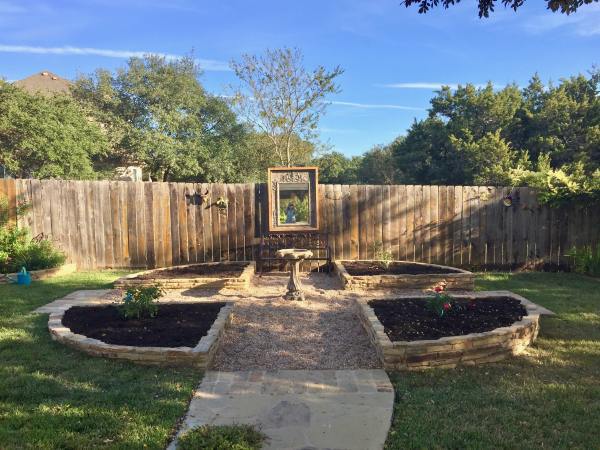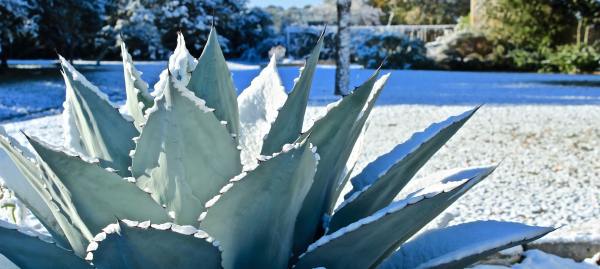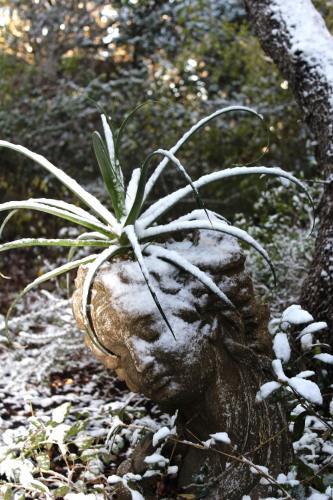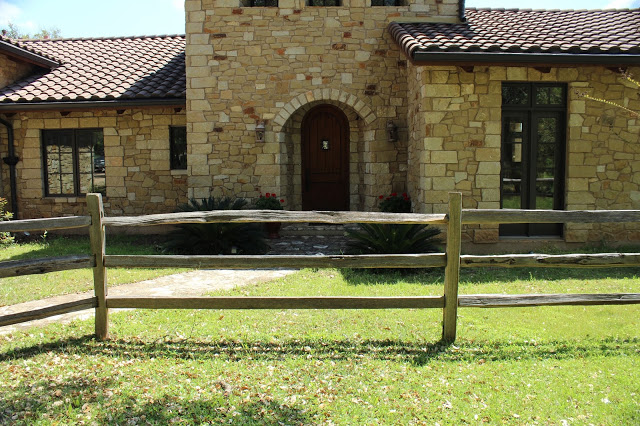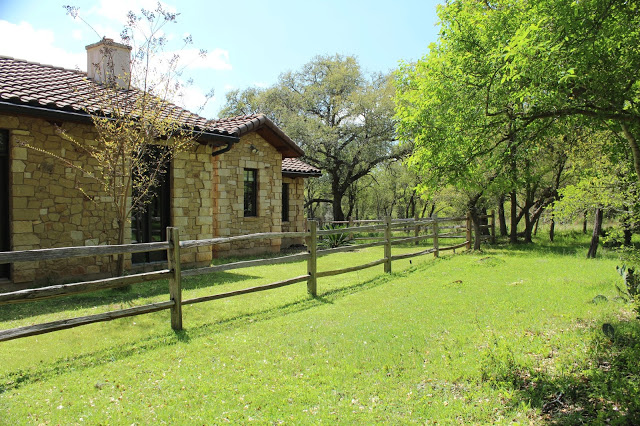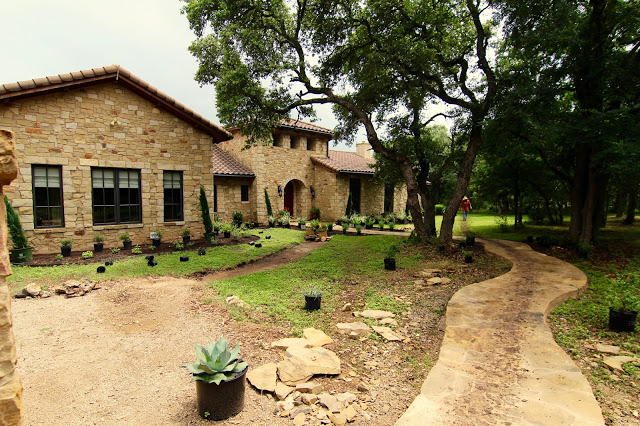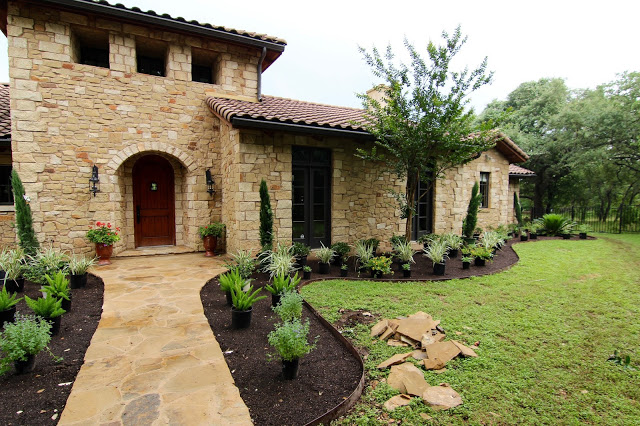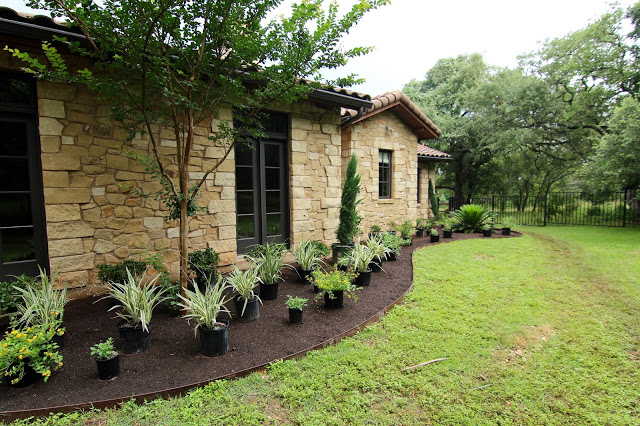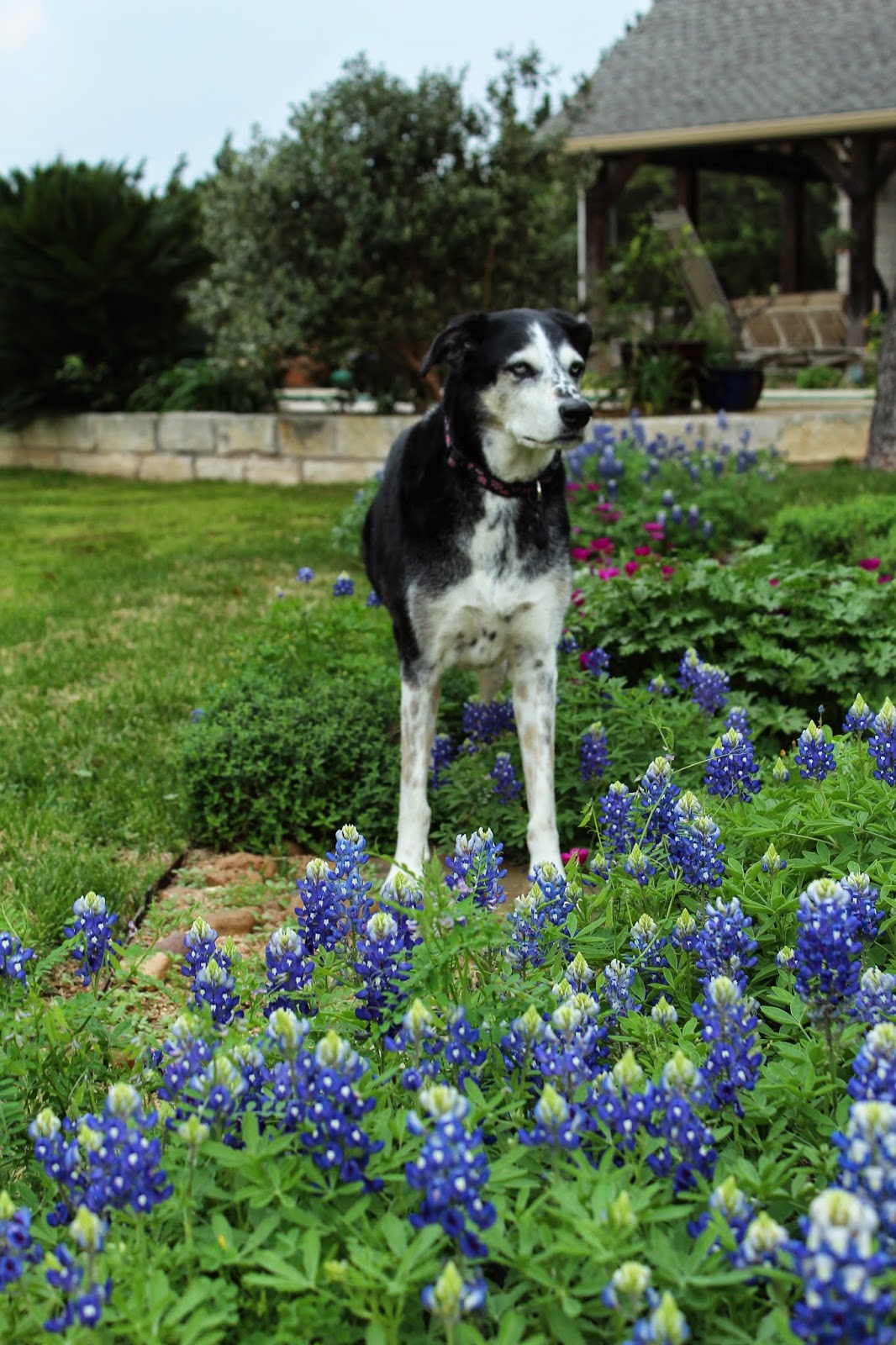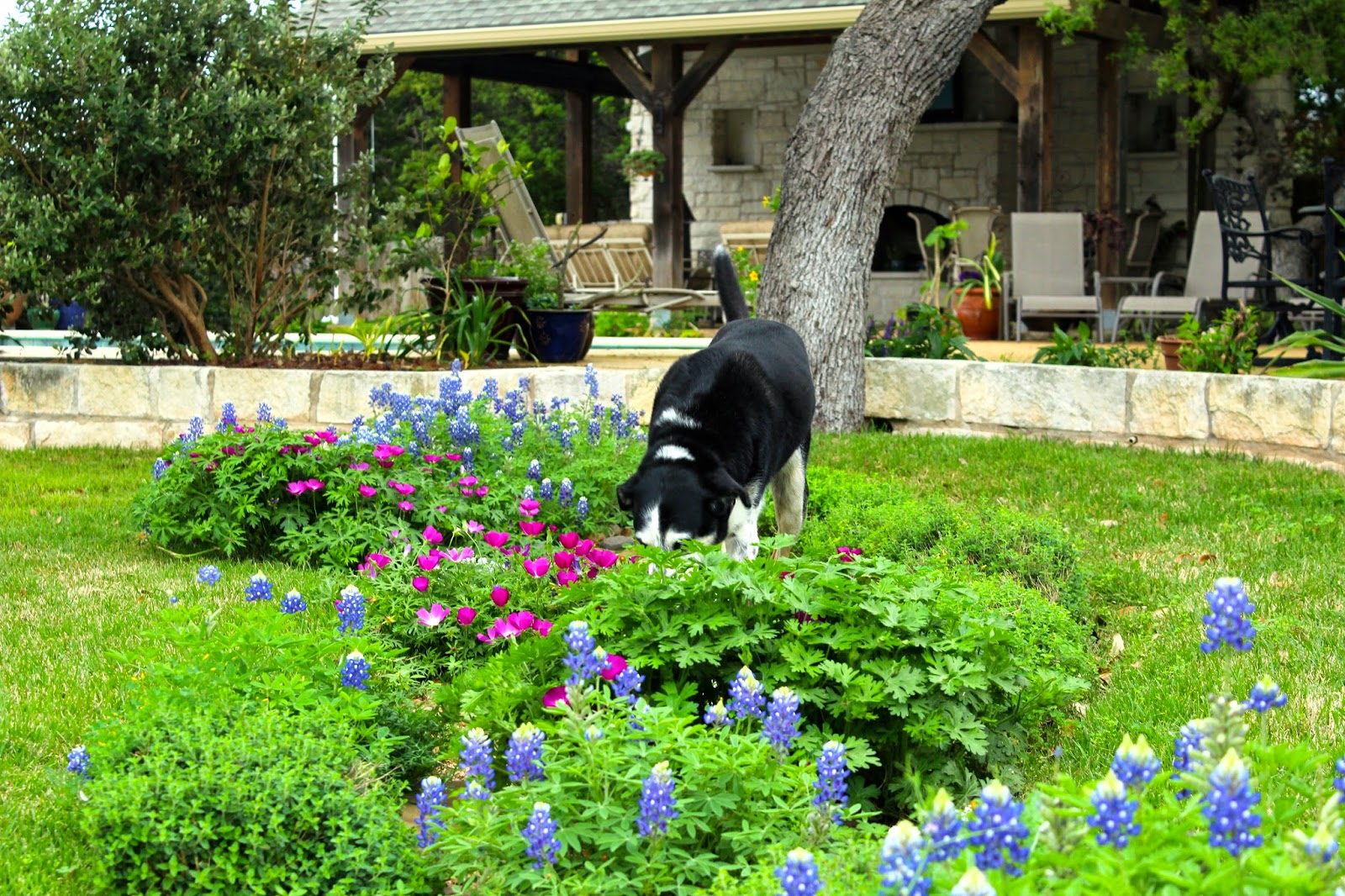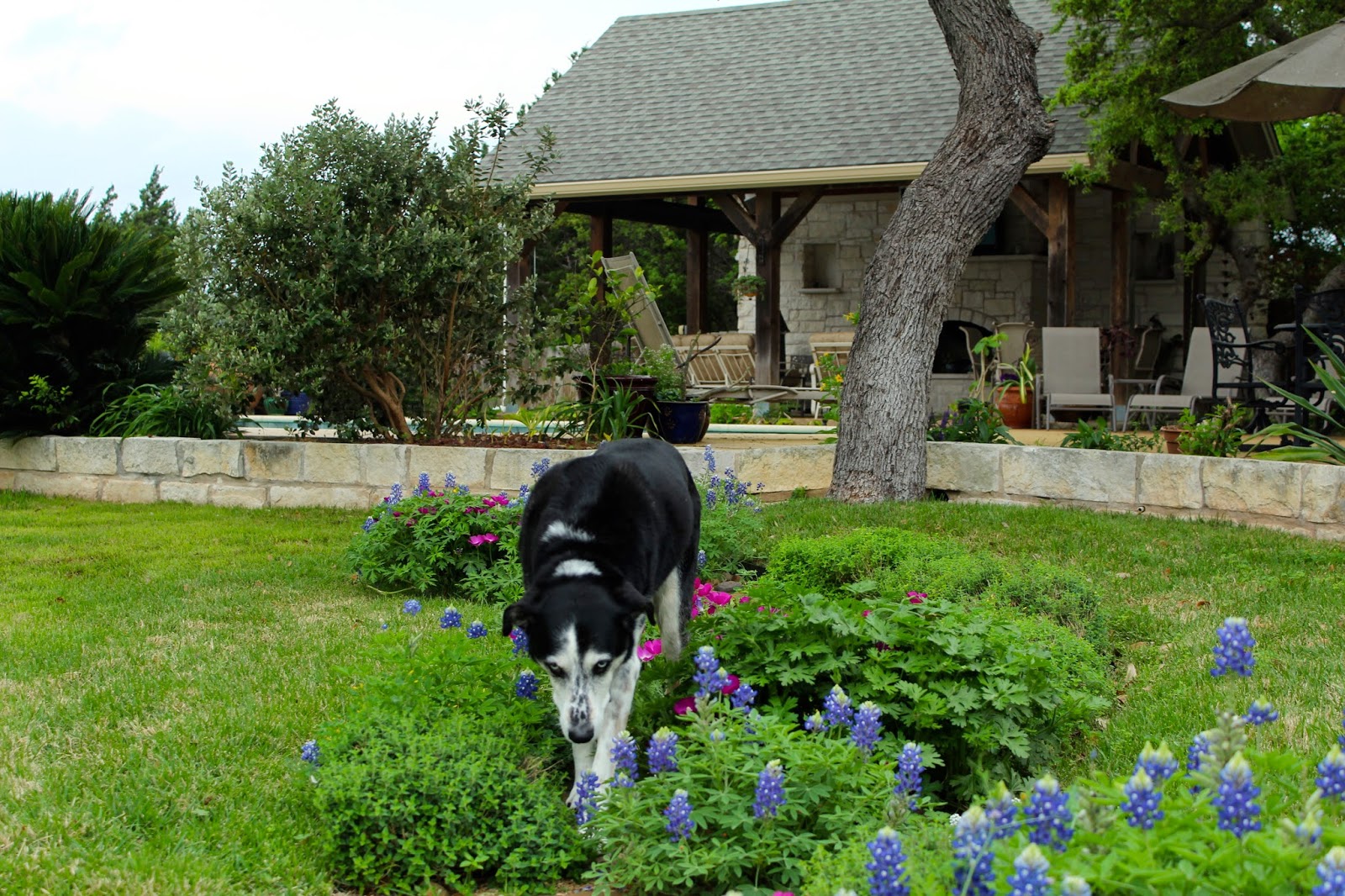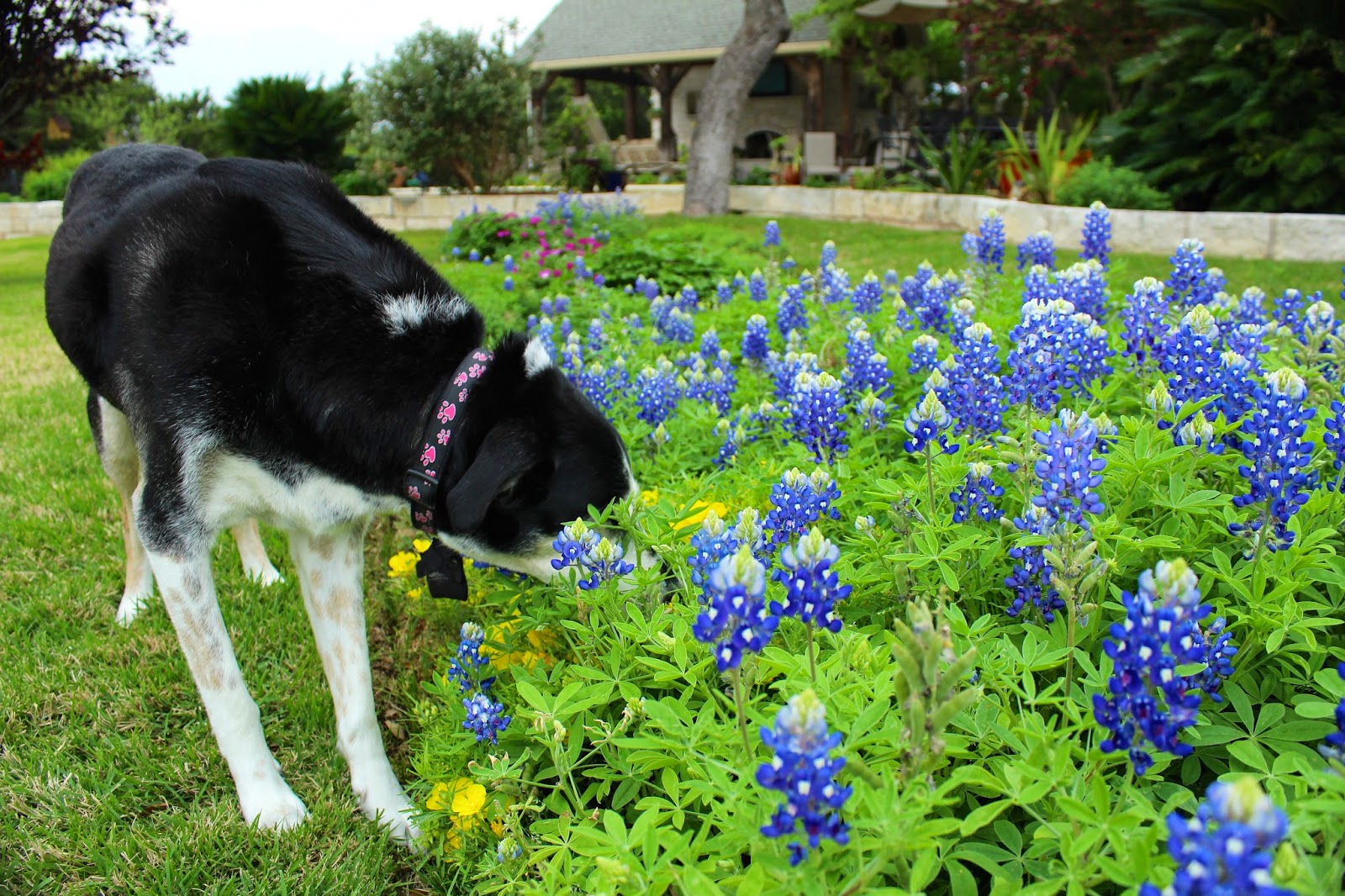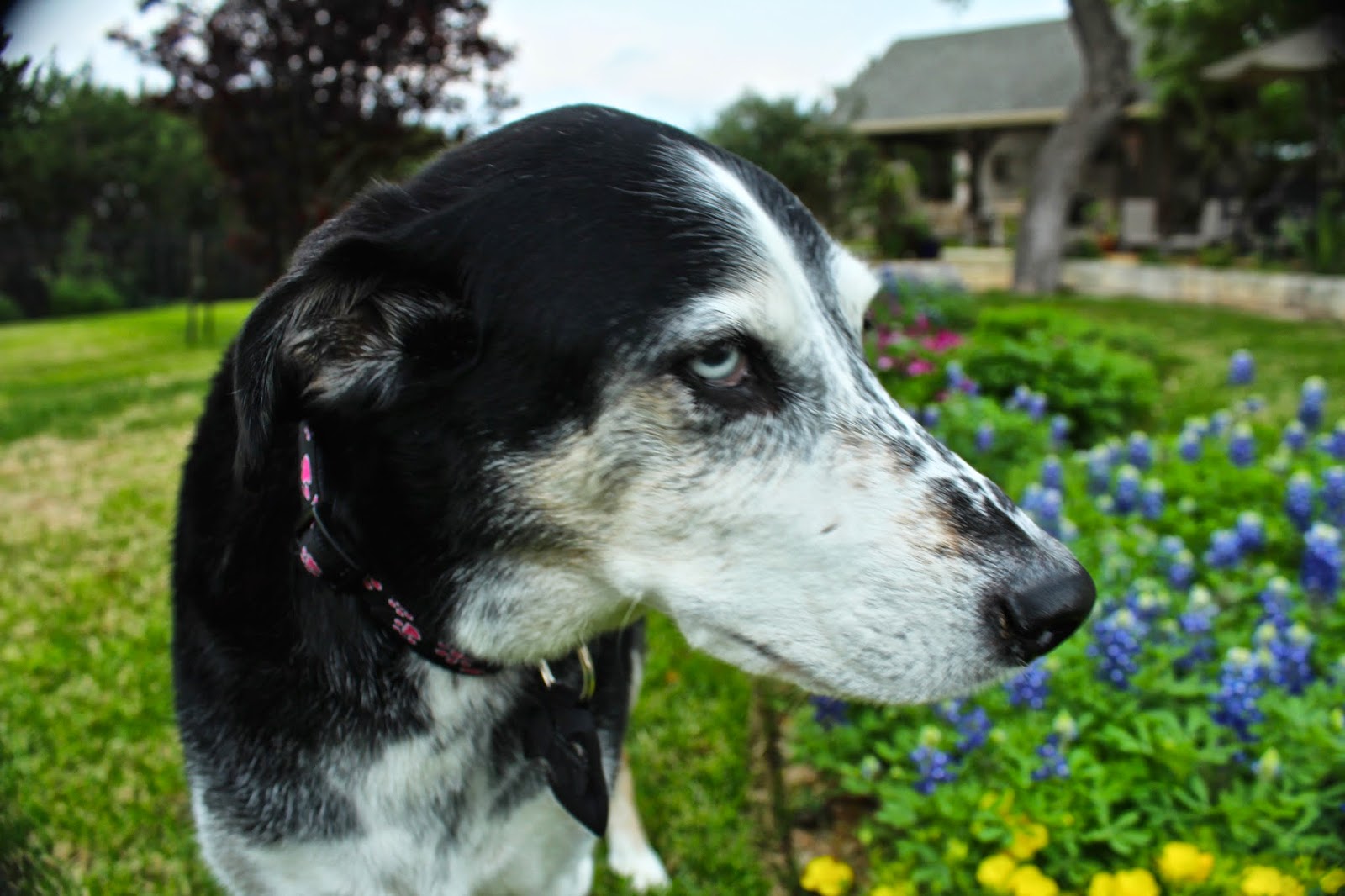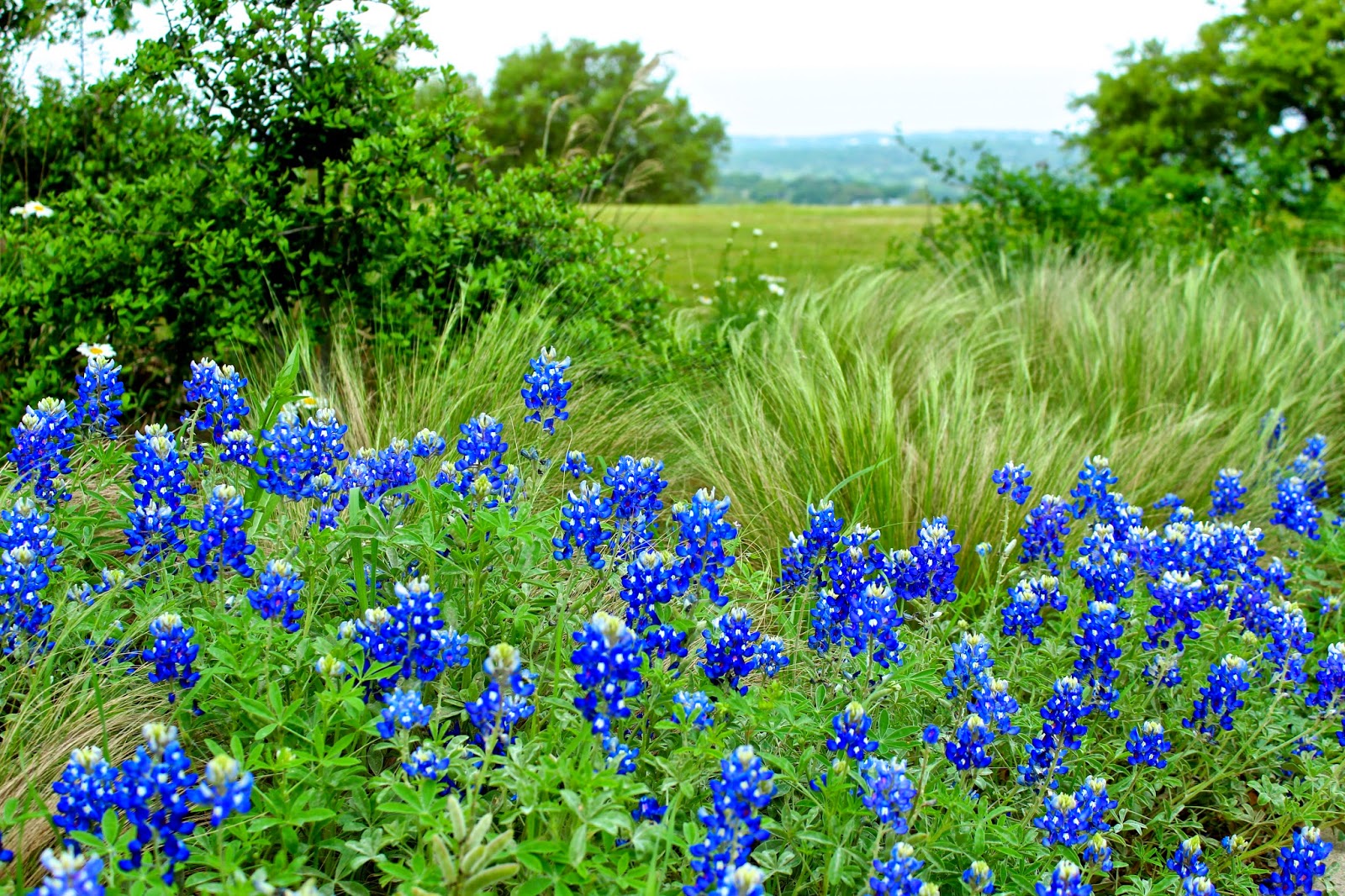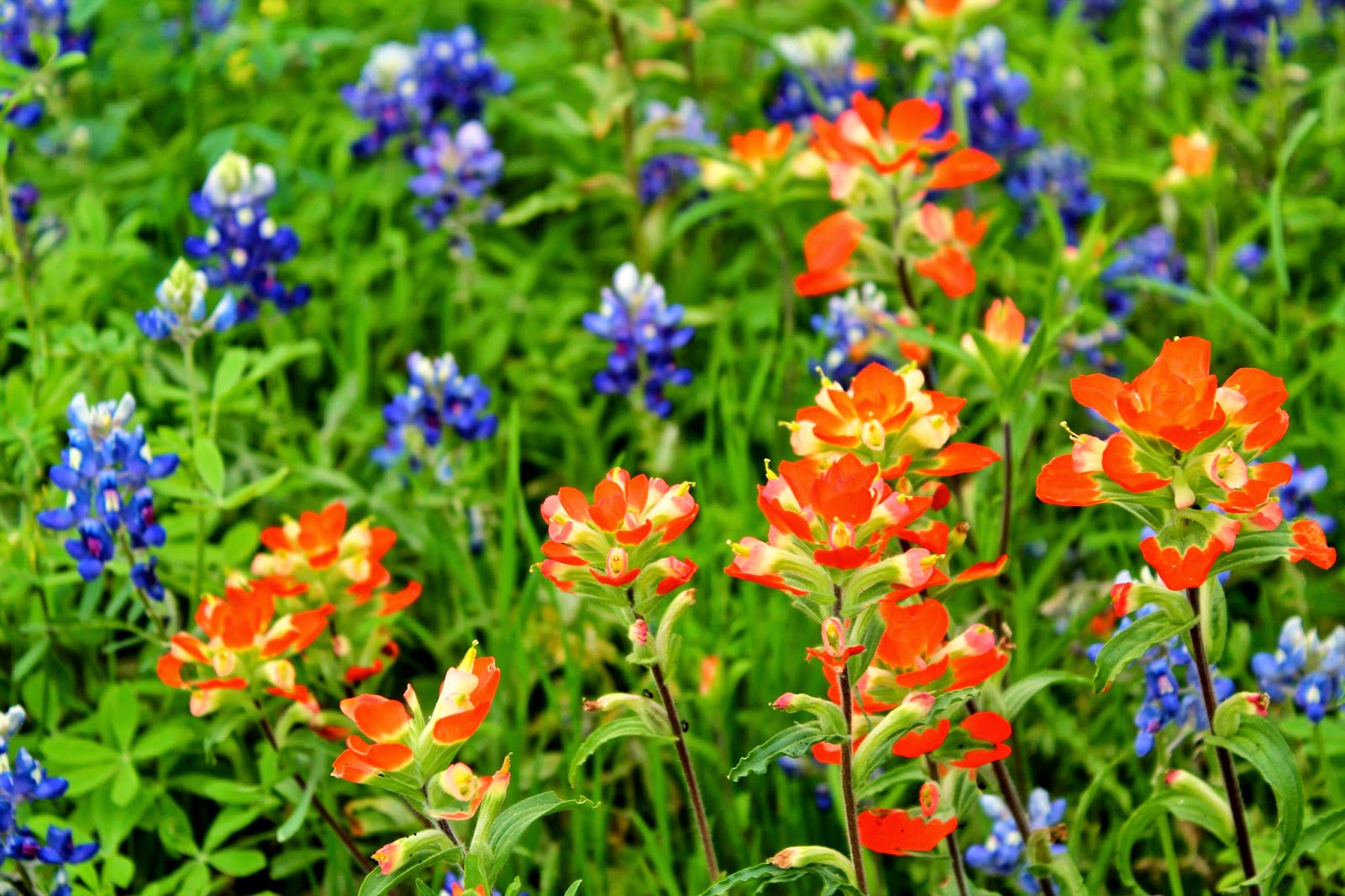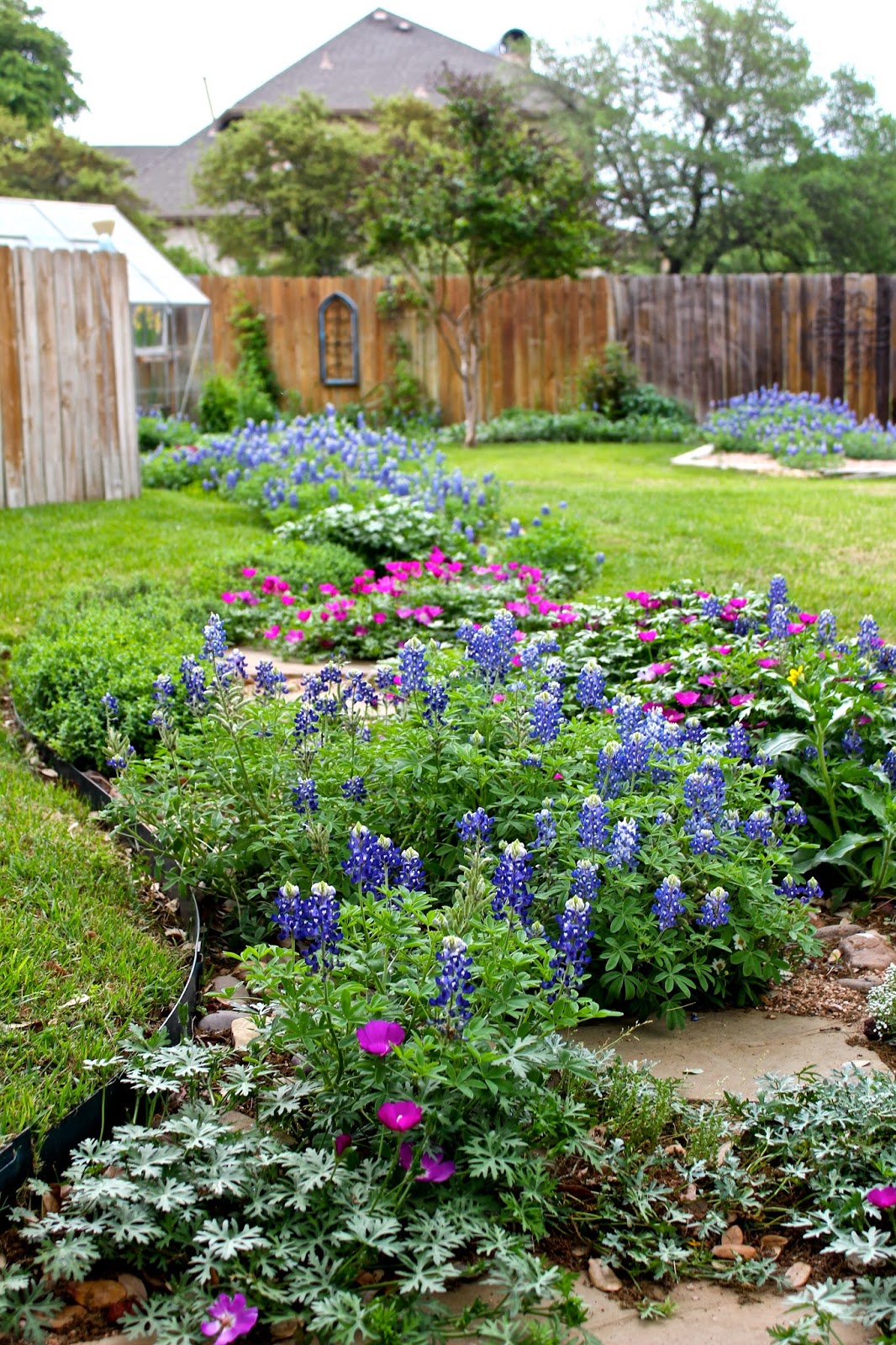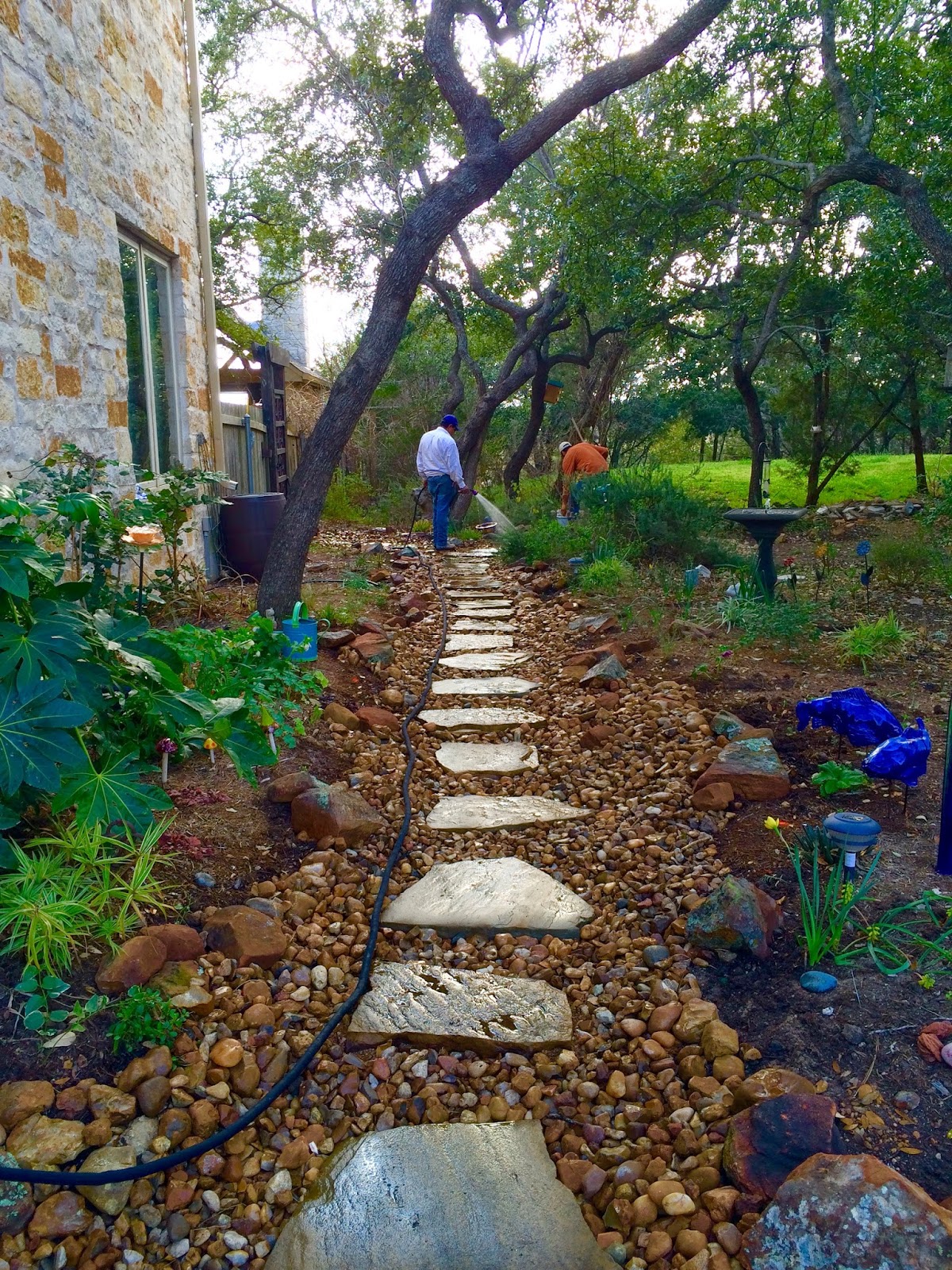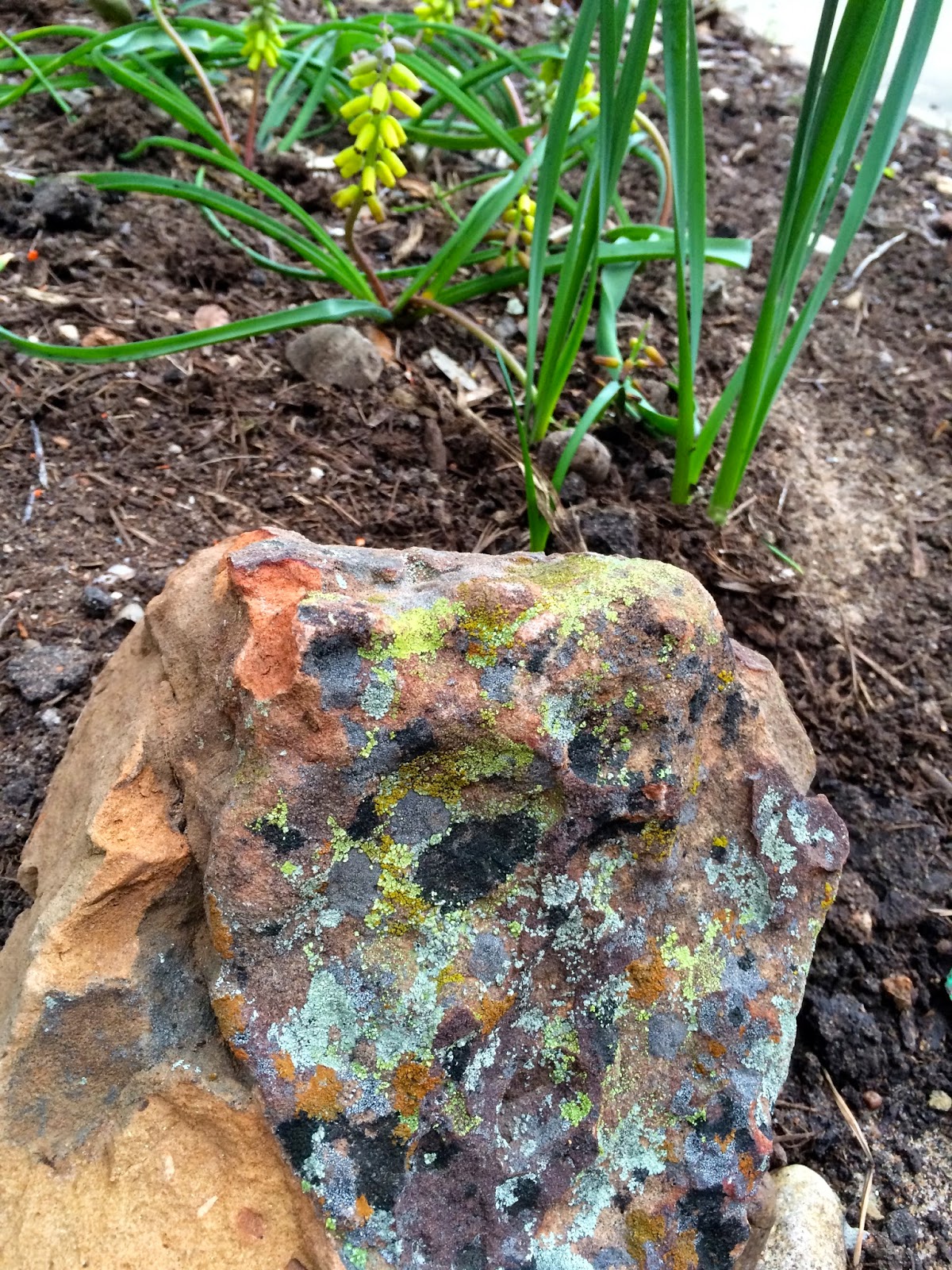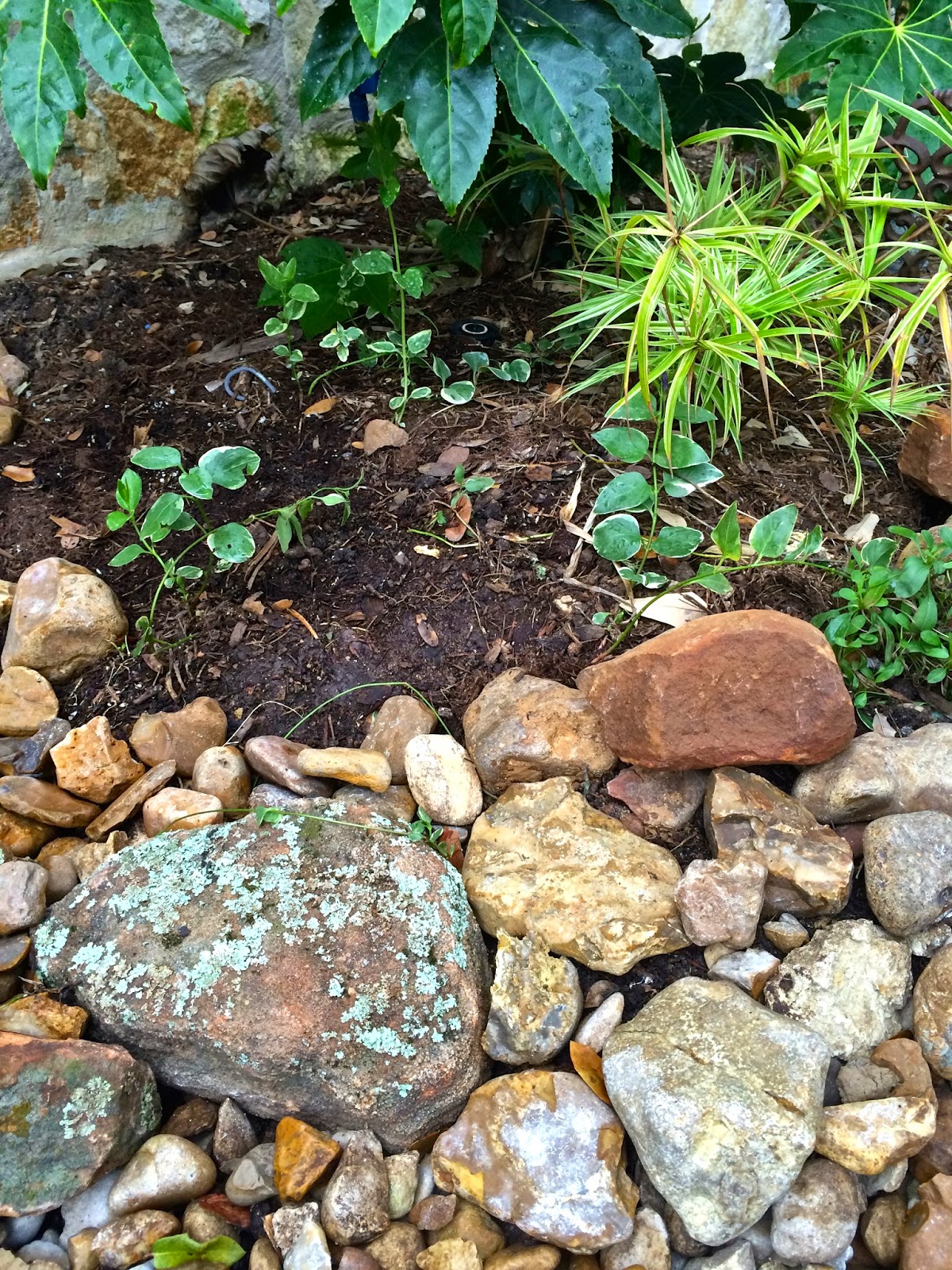Contemporary landscape creates comfort at Garden Bloggers Fling garden
Combining contemporary style with cool comfort, landscape designer, B. Jane, opened her garden up to the Garden Bloggers Fling held in Austin last summer. Her straightforward lines and thoughtful plantings evoke a sense of calm and simplicity.
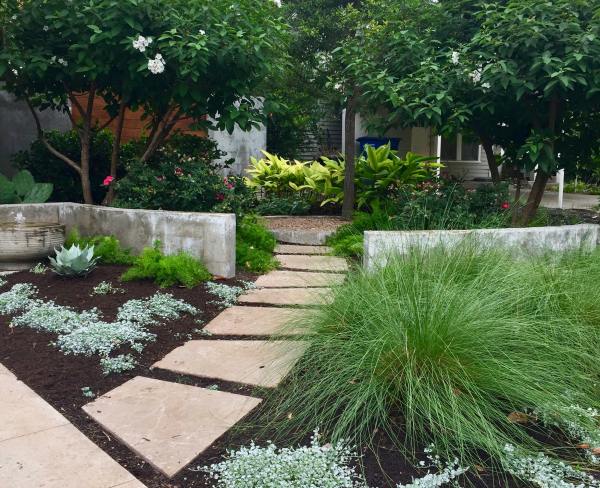
She uses a stone wall and steps to define the entrance.
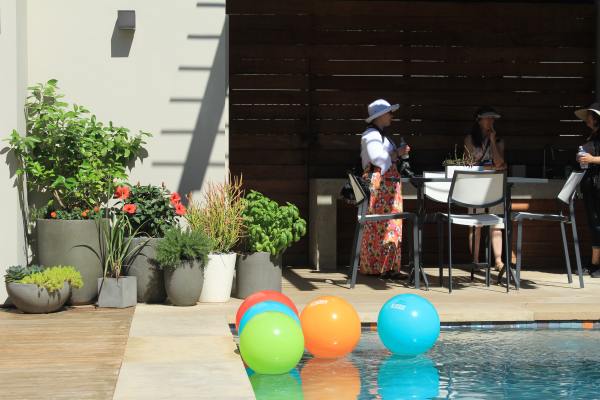
Entertaining space is punctuated by brightly colored blooms and neon children’s balls floating in the pool.
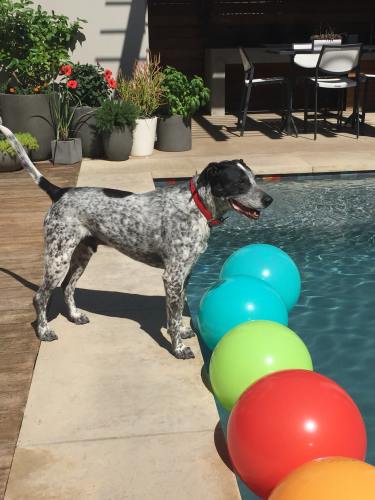
Brisket, the official greeter, welcomed us to his backyard. He didn’t seem to mind having company and sharing his oasis with us.
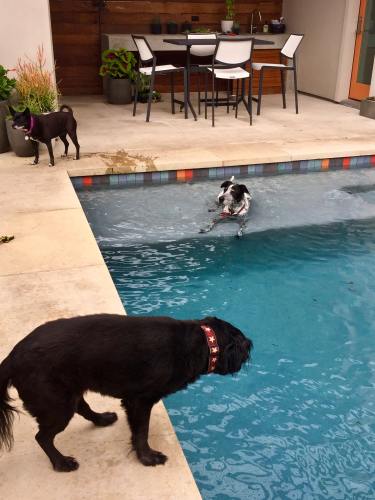
When Pam and I scouted the garden in 2017 as we developed our itinerary for the Fling, we had the pleasure of meeting Brisket’s siblings as well. Brisket clearly knows how to cool off on a hot summer day.
B. Jane designed a variety of seating vignettes throughout the garden.
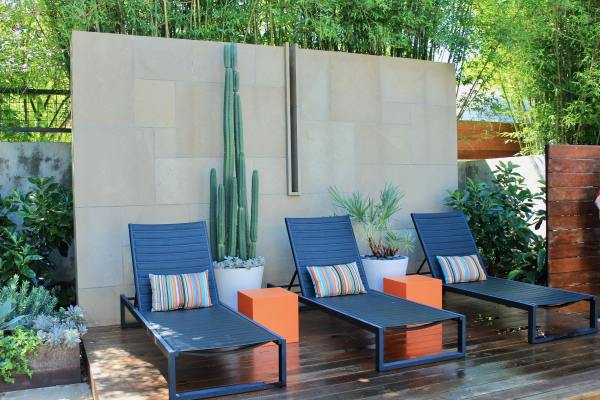
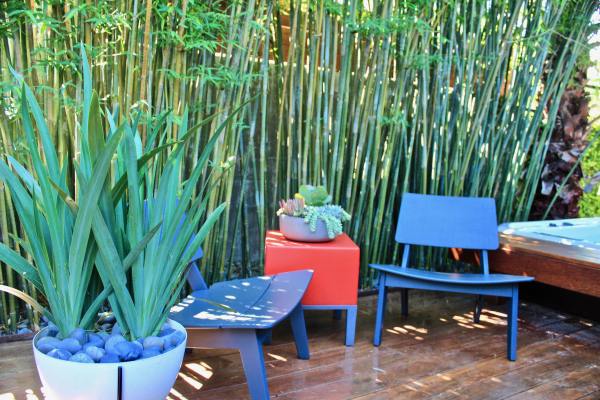
Foregoing the formal seating options, a group of bloggers enjoyed the shady view from this wall running along one side of the garden.
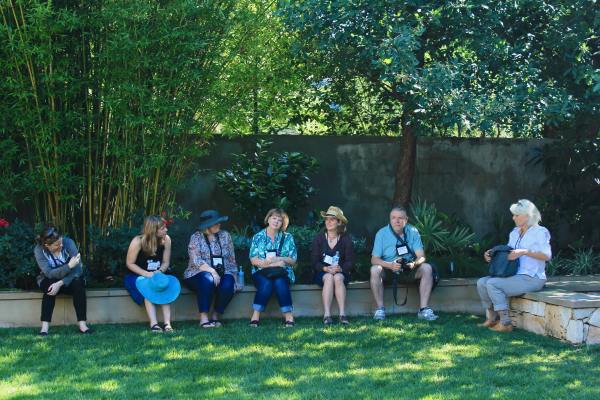
With cooling concrete walls and a canopy of shade. this was a perfect spot for bloggers to take a rest and enjoy the garden view.

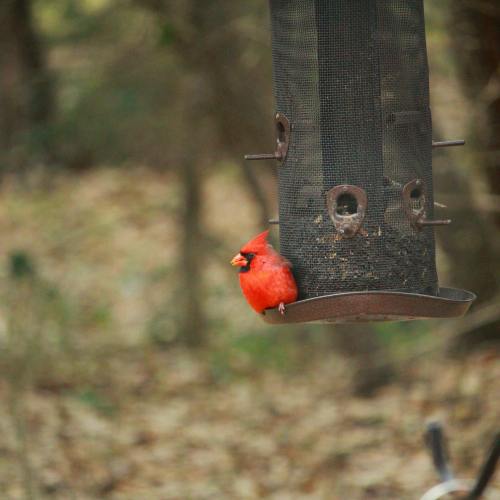
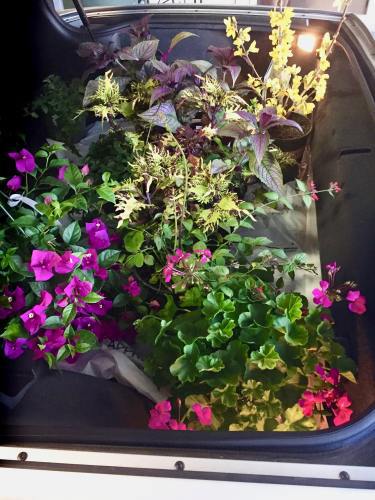
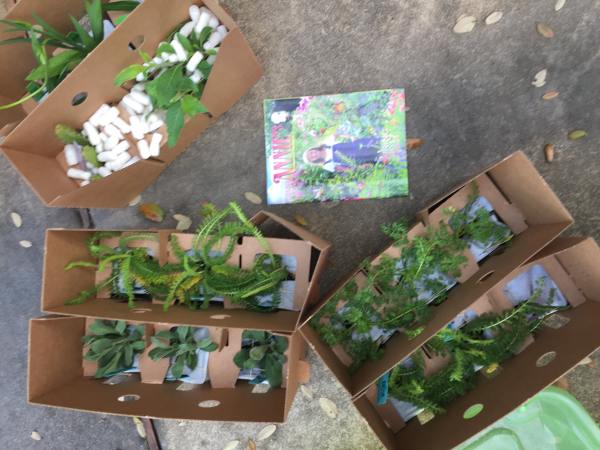
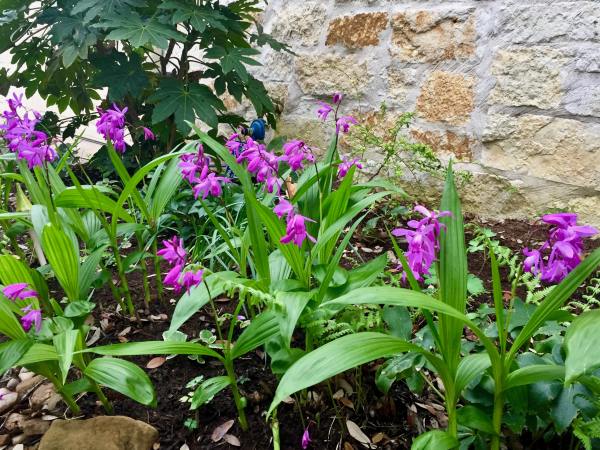
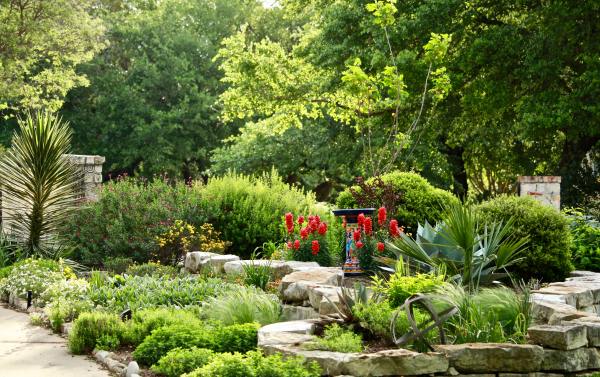
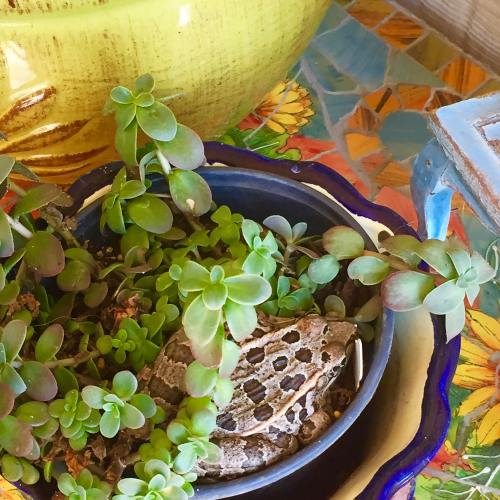
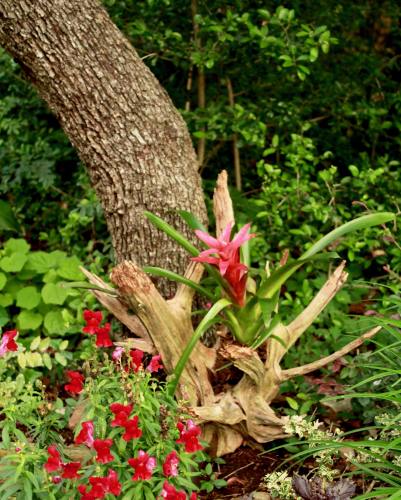
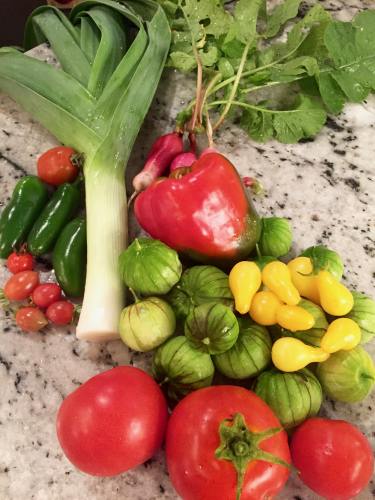 July: By now, the veggie garden provides us with an ongoing variety of great fruits and vegetables. Sadly, it is also the time for stink bugs and leaf-footed bugs to attack the tomatoes. Almost impossible to eliminate, I get depressed about the impending demise of my tomato crop. They multiply so quickly, it’s impossible to control them by hand squishing or spraying them with the hose.
July: By now, the veggie garden provides us with an ongoing variety of great fruits and vegetables. Sadly, it is also the time for stink bugs and leaf-footed bugs to attack the tomatoes. Almost impossible to eliminate, I get depressed about the impending demise of my tomato crop. They multiply so quickly, it’s impossible to control them by hand squishing or spraying them with the hose.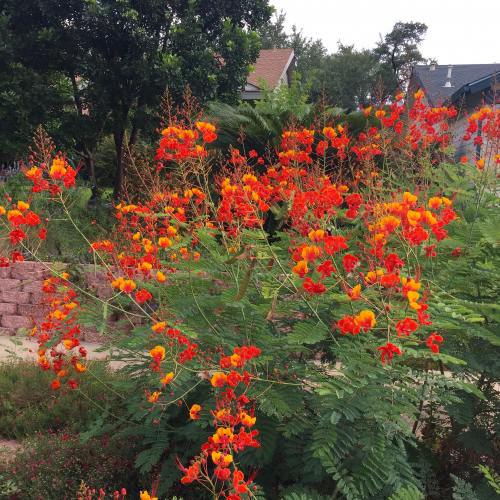
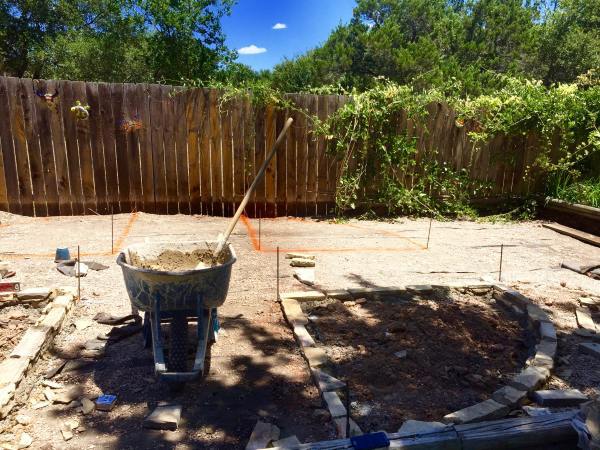
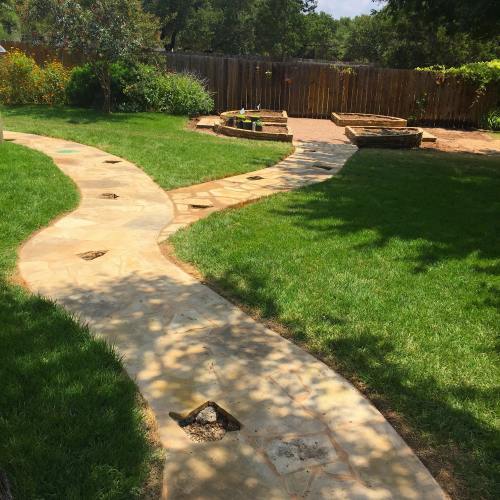
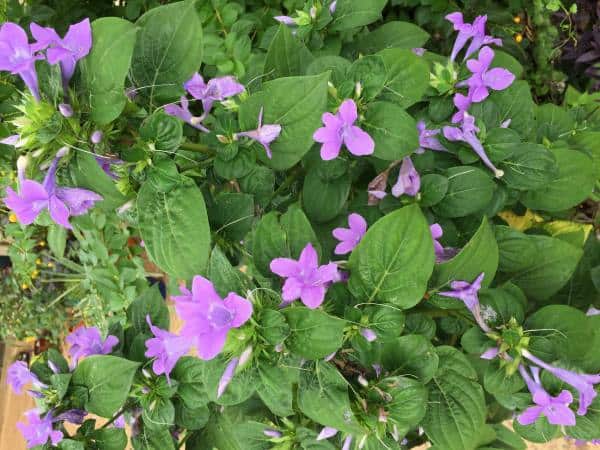 November: Fall also brought forth blooms from the newly planted Phillipine Violet, Barleria polytricha. My first experience growing this plant, it was awelcome addition to the tropical garden.
November: Fall also brought forth blooms from the newly planted Phillipine Violet, Barleria polytricha. My first experience growing this plant, it was awelcome addition to the tropical garden.